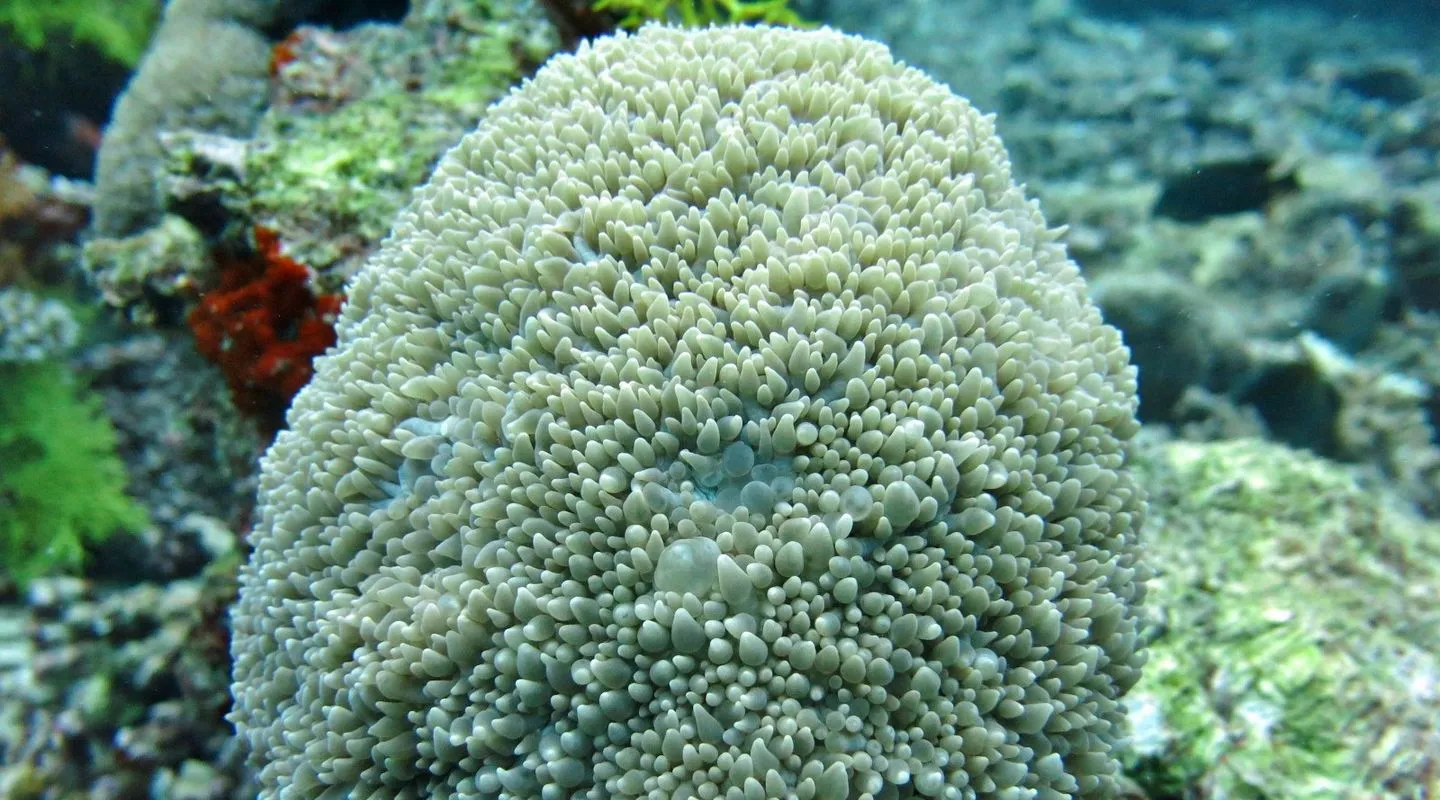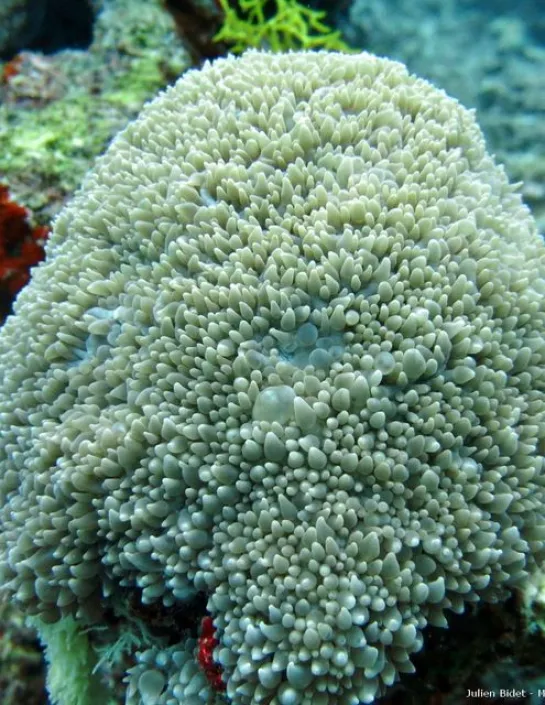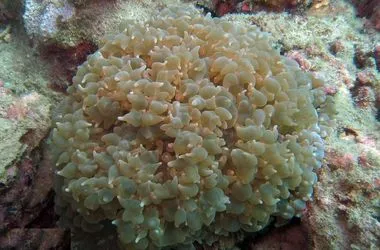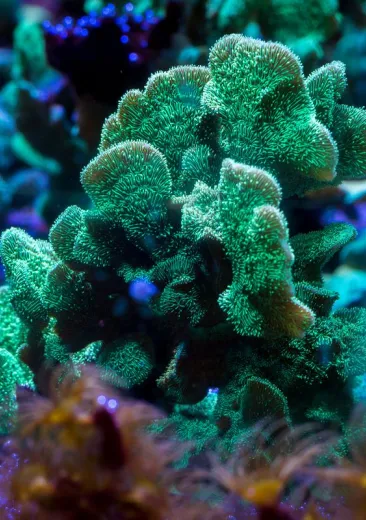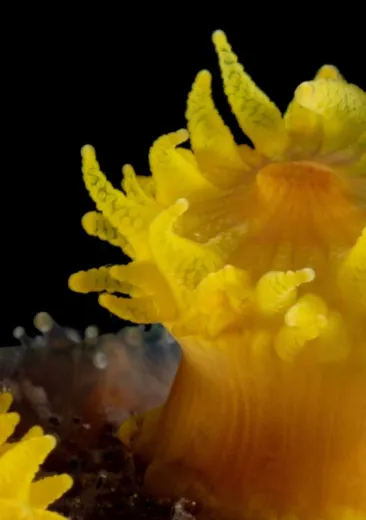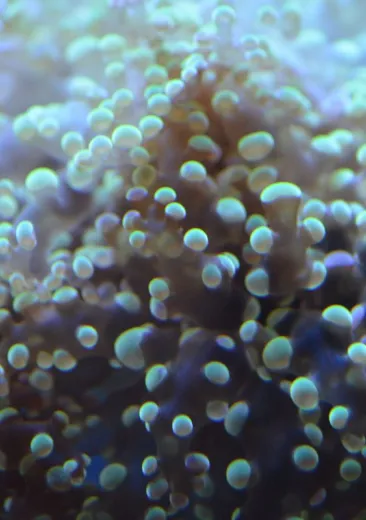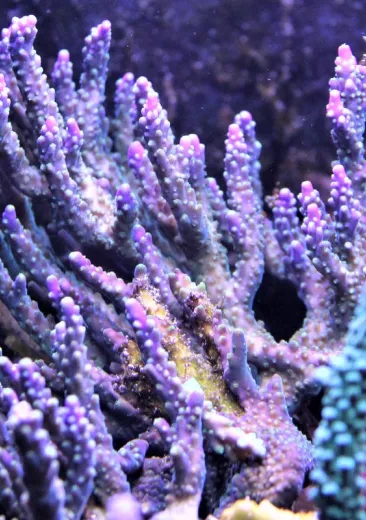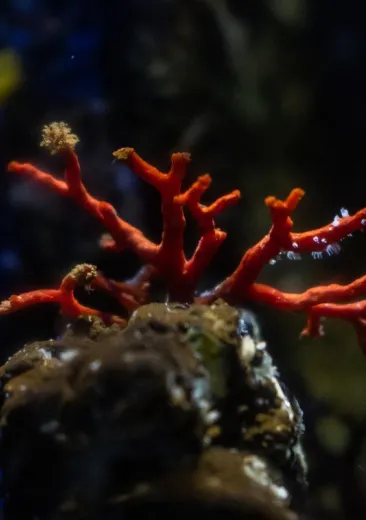Where is the animal to be found?
This coral grows in anfractuosities or ledges and protected areas.
It can be seen in the Red Sea, the Indian Ocean (Mayotte, Scattered Islands in the Indian Ocean) and the western tropical Pacific. It can also be found in New Caledonia.
How can it be recognised?
Bubble coral forms colonies that can grow up to 2 m in diameter. The coral is covered with vesicles that vary in colour from pale grey to green. These are more visible during the day and can retract when disturbed.
What is distinctive about it?
During the day, the symbiotic algae that live in the vesicles of this coral feed it with the sugars that they produce during photosynthesis. At night, the vesicles retract because there is no more light available for photosynthesis.
At night, the polyps, which have venomous cells called cnidocytes (similar to jellyfish), capture tiny organisms.
Threat and protective measure
Physogyra lichtensteini is listed in Appendix II of CITES.
Like other corals, it is very sensitive to bleaching.
